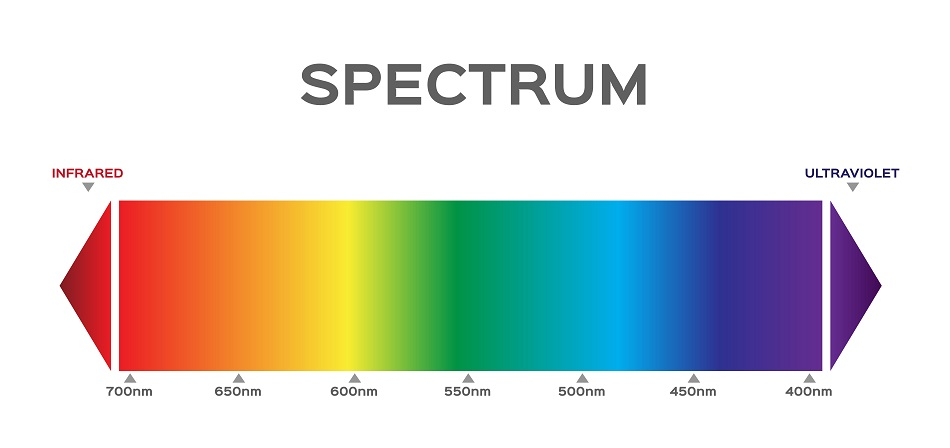Article updated on 31 March 2021

Image Credit: gritsalak karalak/Shutterstock.com
Infrared spectroscopy (IRS) is a technique used to analyze individual substances in isolation or a mixture, using their spectral information. IRS is based on the measurement of the wavelength and intensity of the absorption of infrared light (IR) by the sample examined, which ultimately converts the IR to heat.
The IR used is typically from mid-spectrum and has sufficient energy to excite the molecules, such that they vibrate to higher energy levels. The spectrum then shows absorption bands, and these are characteristic for each type of chemical bond. This tool is most useful when used to detect organic and organometallic compounds. It derives data which is based on the twisting, bending, rotation, and vibration of atoms in a molecule.
Infrared spectroscopy apparatus based on absorption measurements are largely divided into dispersive, non-dispersive, and reflectance spectrophotometers and the Fourier transform infrared (FTIR) spectrophotometer. In these infrared spectra, the absorption peaks are downwardly directed in keeping with the reduced transmittance of the radiation sample. The IR spectrum thus obtained is analyzed via transmission, reflection and special methods such as IR emission spectroscopy.
The Basis of Infrared Spectroscopy
IR spectroscopy is based on the fact that molecules absorb radiation at frequencies which are in direct relationship to their structure. Thus, radiation absorption is said to occur at resonant frequencies, so-called because the frequency of the radiation absorbed resonates with that of the molecular vibration. Factors affecting these energies include the atomic positions that capture the molecular potential energy, the atomic masses, and the coupling between the vibrational and electronic energies of the atom. Thus, when the transmitted light spectrum is examined, it shows how much energy was absorbed per frequency or wavelength.
When the spectrum is simple and the number of absorption bonds is low, it indicates a simple pure sample. A more complex spectrum with increased absorption bands would indicate a more complex molecule.
Many vibrational movements involve the whole molecule, and this can make analysis a problem when the substance is unknown. However, the IR spectrum can be divided into a functional group region and a fingerprint region. The first region extends from 4000 to 1500 per cm, while the second includes all wavenumbers below that.
The fingerprint region is named because it reflects molecular bending vibrations very characteristic of the whole or a major part of the molecule. However, the functional group region shows stretching vibrations that reflect typical functional groups, thus describing more about the components that make up the organic molecule. These frequency bands are very reliable.
Types of vibration of the CH2X2 group found commonly in organic compounds include latitudinal rocking or scissoring motion; the longitudinal wagging and twisting motion, and radial symmetric or asymmetric vibrations.
Types of IR Analysis
Transmission (absorption) Method
Here the IR beam is focused on the sample and the light transmitted through it is measured. The ratio of the pre-irradiation to post-irradiation spectra gives the transmittance spectrum. This can be used to analyze the spectrum of gas, liquid, thin-films, or powders.
Reflection (absorption) Method
In the reflection (absorption) method, the light is reflected from a very reflective base material and the light passing through the sample on the surface of the base material and reflected from it as an evanescent wave is independently measured. The ratio of these two gives the reflectance spectrum. Here again, it is an absorption spectrum that is obtained.
Emission Method
With IR emission spectroscopy, the sample is energized to produce heat, or an IR spectrum, which is then measured. Since emission occurs in the opposite direction to absorption, this is a completely different method. However, substances with high emittance are those which have a high absorption.
The use of FTIR has enabled the measurement of feeble emissions from substances that are difficult to excite. The advantage is that the contrast between the sample and the base material is exploited. This means even a thin surface organic film with a low intensity of emission on a metallic material can be measured. The type or shape of the underlying surface is immaterial, due to the isotropic nature of the emission (whatever the base material’s surface material). Moreover, the sample is preserved intact and does not come into contact with the measurement tool. Despite these benefits, IR emission spectroscopy is rarely used.
Advanced IR Spectroscopy
Two-dimensional IR is also being used in more advanced instruments, such as in correlation spectroscopy. Here more than one sample IR spectra are used to uncover complex properties and to show an overall picture of what happens when there is a perturbation. Nonlinear 2D IR spectroscopy is also available, using laser pulses that last only femtoseconds to first excite the system for a controlled period, followed by another probe pulse to produce emission. The frequencies at these different excited phases are correlated to observe how different vibrational modes are coupled. The result is that dynamic changes can be monitored in terms of picoseconds.
Sources and Further Reading
Disclaimer: The views expressed here are those of the author expressed in their private capacity and do not necessarily represent the views of AZoM.com Limited T/A AZoNetwork the owner and operator of this website. This disclaimer forms part of the Terms and conditions of use of this website.